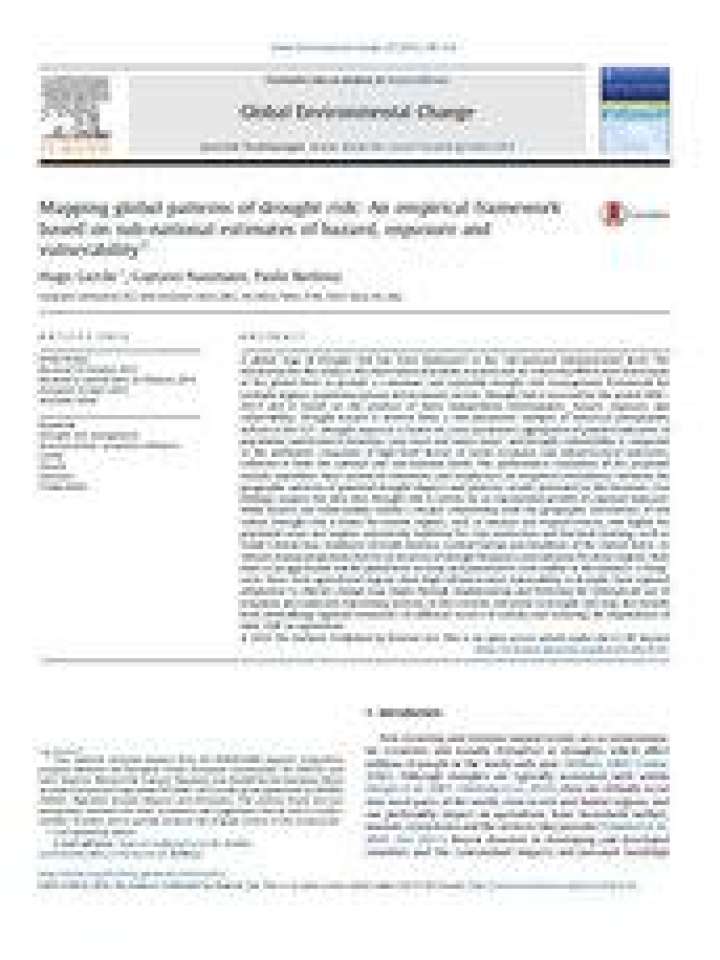Mapping global patterns of drought risk: An empirical framework based on sub-national estimates of hazard, exposure and vulnerability
In this paper, drought risk is assessed for the period 2000–2014 and is based on the product of three independent determinants: hazard, exposure and vulnerability, elaborating a global drought-risk map at the sub-national administrative level. As climate change projections foresee an increase of drought frequency and intensity, then there is an aggravated risk for global food security and potential for civil conflict in the medium- to long-term.
Since most agricultural regions show high infrastructural vulnerability to drought, then regional adaptation to climate change may begin through implementing and fostering the widespread use of irrigation and rainwater harvesting systems. In this context, reduction in drought risk may also benefit from diversifying regional economies on different sectors of activity and reducing the dependence of their GDP on agriculture.
The main highlights of this publication are:
- The spatial correlation between global drought risk and hazard occurence is weak
- Potential drought risk is mainly driven by the exponential growth of regional exposure
- Most world regions lack infrastructure capacity to cope with drought disasters
- Economic wealth exhibit a relationship to drought risk stronger than social progress
Global Environmental Change, Volume 39, July 2016, Pages 108–124. This paper is published under a Creative Commons License Attribution 4.0 International (CC BY 4.0)
Explore further
